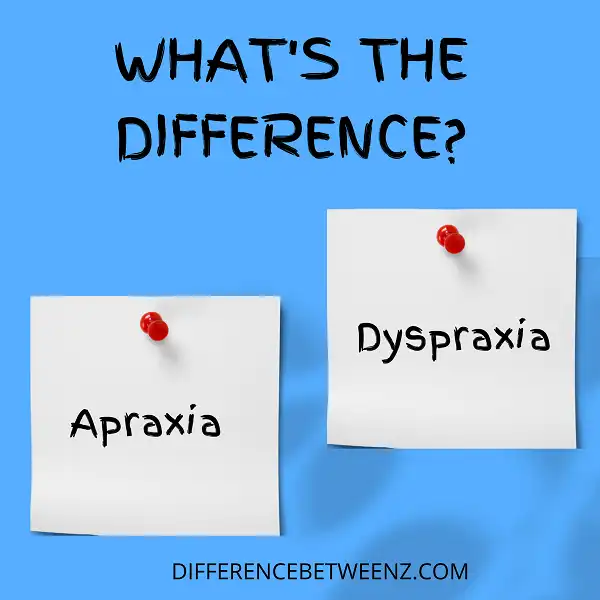A common question that parents of children with speech-language disorders ask is, “What’s the difference between apraxia and dyspraxia?” This blog post will provide an overview of the differences between these two conditions. First, we’ll define each term. Then, we’ll discuss the symptoms and causes of each condition. Finally, we’ll offer tips for parents on how to best support their child with apraxia or dyspraxia.
What is Apraxia?
Apraxia is a neurological disorder that affects a person’s ability to perform purposeful movements. The disorder is characterized by an inability to carry out motor activities even though the muscles are not physically impaired. Apraxia can affect any voluntary movement, including speaking, writing, and gestures.
The exact cause of apraxia is unknown, but it is often associated with damage to the parts of the brain that control movement. Treatment for apraxia typically focuses on helping the individual learn new ways to communicate and perform daily activities. With appropriate intervention, many people with apraxia are able to greatly improve their quality of life.
What is Dyspraxia?
Dyspraxia is a neurological disorder that affects an individual’s ability to plan and execute motor skills. The exact cause of Dyspraxia is unknown, but it is believed to be caused by an imbalance in the way the brain processes information. Dyspraxia can affect both fine and gross motor skills, and symptoms can range from mild to severe.
Individuals with Dyspraxia often have difficulty with activities such as writing, drawing, and tying shoelaces. Dyspraxia can also impact an individual’s speech, coordination, and balance. While there is no cure for Dyspraxia, some individuals may be able to improve their symptoms with occupational therapy or other interventions.
Difference between Apraxia and Dyspraxia
Apraxia and dyspraxia are both neurological disorders that can affect a person’s ability to move their body in a purposeful way.
- Apraxia is characterized by difficulty planning and executing movements, while dyspraxia is characterized by problems with the coordination and execution of movements.
- Both disorders can vary in severity, and they may overlap to some extent. However, they are distinct conditions with different causes and treatments.
- Apraxia is typically caused by damage to the motor cortex, while dyspraxia is typically caused by problems with the development of the central nervous system.
Treatment for apraxia often includes speech therapy or occupational therapy, while treatment for dyspraxia may include physical therapy, occupational therapy, or medication.
Conclusion
Dyspraxia is a neurological disorder that affects movement. People with dyspraxia may have difficulty with tasks such as writing, walking, or using utensils. Apraxia is a neurological disorder that affects the ability to plan and carry out movements. People with apraxia often have trouble speaking clearly. Though the two disorders share some similarities, they are distinct conditions. If you are concerned that your child may have dyspraxia or apraxia, consult with a healthcare professional for an accurate diagnosis and treatment options.


